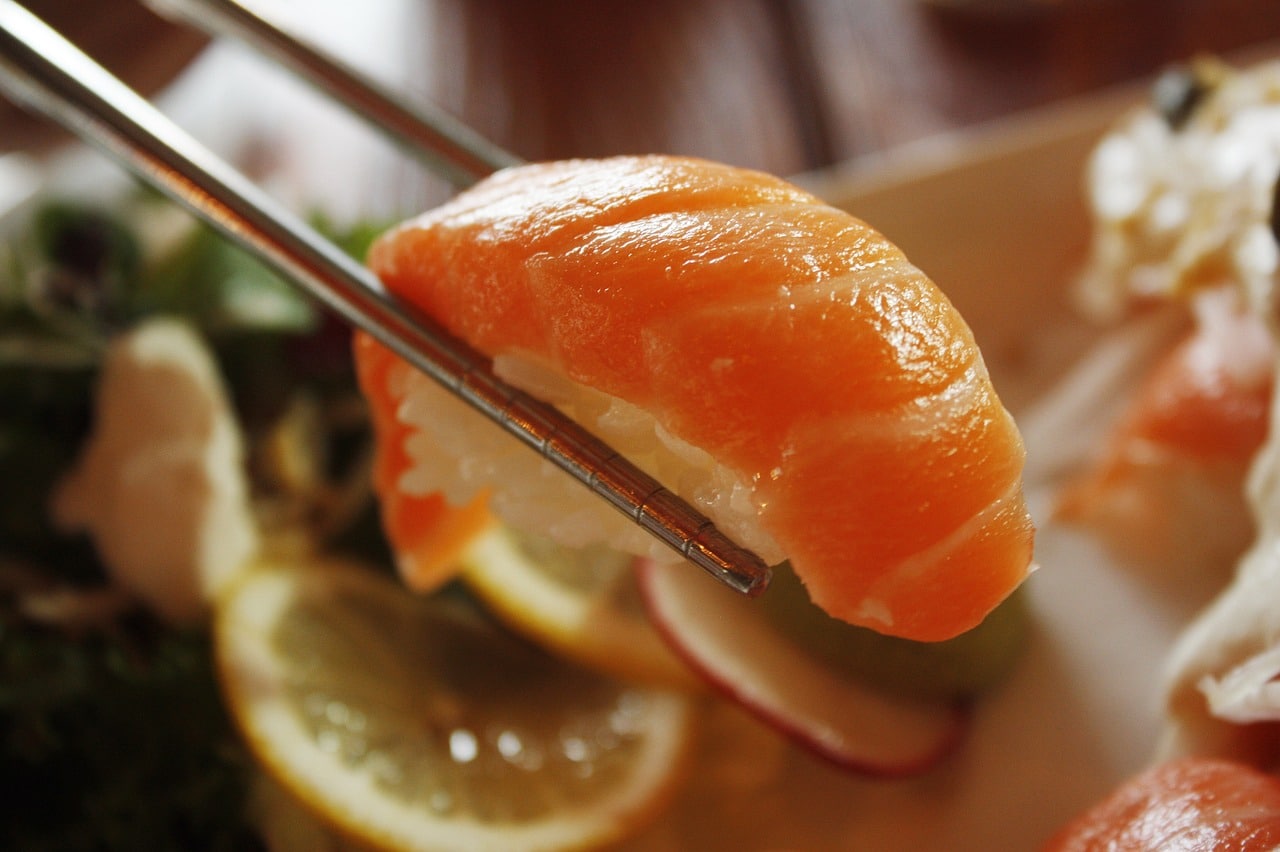Sushi-grade salmon is on everyone’s mind when they want to prepare some sushi at home. There is a wide variety of salmon types for use in a home or professional sushi salmon. The same applies to sashimi salmon, which is also popular in Japan and the rest of the world.
What Part of the Salmon Is Used for Sashimi?
While the entire salmon (including its head) is edible, you can’t use all of the salmon parts for sashimi. The region that is approximately two inches from the head and three inches from the tail is perfect for sashimi. Tail flesh from the salmon is not ideal for sashimi because it is too lean as it gets the most exercise from swimming all day.
The salmon’s central region is suitable because it has fat content, which is tasty and wonderful when served as sashimi. The areas that are nearest the belly of the salmon are fattiest and best for high-quality sashimi. The rest of the salmon fillet can still be used but are judged as having a lower grade than the salmon fillet’s belly strips.
Can You Use Regular Salmon for Sushi?
If you refer to salmon by regular salmon that can be purchased from a fishmonger or a supermarket, the answer is no; you can’t. While technically there is no difference in the salmon species, the problem is in the handling of the fish. Fishmongers, for the most part, do not prepare or store fish for raw consumption. While minimum health standards are put in place, there is still a risk of contracting the disease because the fish was mishandled before being sold to you.
Sushi enthusiasts recommend that you buy fresh salmon from Asian fish markets that specialize in providing safe fish for raw consumption. The handling is so different that you will be surprised. As for frozen salmon, you can certainly try preparing with frozen salmon, but the taste or flavor might be different.
Your best recourse will always be to buy fresh from a specialized fish market if you prepare sashimi. That way, the risk of contracting parasites would be minimal. And while it is not widely reported, people in Japan do get parasites from eating raw food.
However, the cases are low because the chefs and restaurants in Japan specialize in handling raw food, so the transmission rate is much lower and constitutes only a small, small percentage of the total people who eat raw food in restaurants or at home.
The following are the types of fish used for preparing sushi and sashimi:
- Rainbow trout
- Atlantic salmon
- Cherry salmon
- Red salmon
- Silver salmon
- Pink salmon
- Chum salmon
- King salmon
How Do You Prepare Salmon for Sushi?
The first step is to sanitize your working station. Make sure that your knives and cutting board are as clean as can be. Apart from washing, you may want to give everything a final wipe down to be on the safe side. Check your sushi recipe and find the correct measurement for each slice of sushi. Begin slicing until you get the right-sized portions. Place the individual slices of sushi on a tray.
For best results, always hold your knife at a 45° angle. Let the blade do the work. Do not exert too much pressure to damage the fish. Nigiri slices are approximately .8 inches thick. You should be able to reduce an entire fillet to several portions of nigari easily. Continue slicing until you have the right number of salmon portions for your intended sushi tray.
For sashimi, you need to cube the salmon. Aim for a thickness of ¾ inch. Like what we did for the nigiri, continue cubing the fish until the fillet is gone. Any scraps can still be consumed, but they would look a bit unsightly if served with the other slices that are perfect.
Should I Freeze Salmon for Sushi?
The general rule for fish that is meant to be prepared and consumed raw is you need to reduce the overall time from market to plate. Let’s assume that you buy fish at 9 AM, but you want to eat sushi or sashimi at 7 PM. What do you do?
The first impulse is to place the package of salmon fillets on a tray or plate and put the refrigerator’s fillets. If you have an efficient refrigerator that gets cold, then there should be no problem here, especially if you haven’t touched the fish. Untouched fish means the fish isn’t contaminated, and there is probably only a minimal amount of potential contaminants on the fish meat.
However, let’s say that you got fish that was not placed in a sealed package because it was specially prepared in a fish market that fillets for you. You ride home for an hour, and you are not yet ready to consume the fish. Do you place the specially cut fish in the fridge, or do you freeze it?
Freeze the fish to reduce the chances of infection and contamination. Be sure to fillet the fish first before freezing. Wrap the fish properly so it won’t come into contact with other products stored in your freezer.
The juices of meat, particularly, are problematic because they harbor bacteria, viruses, and even eggs of common parasites. If you consume fish with viable parasite eggs, those parasites will hatch and thrive and eventually reproduce inside your body. Cross-contamination is a real threat to people who love eating sushi and sashimi, so if you are preparing these dishes at home, it is wise to be very careful about how you store the fish.

